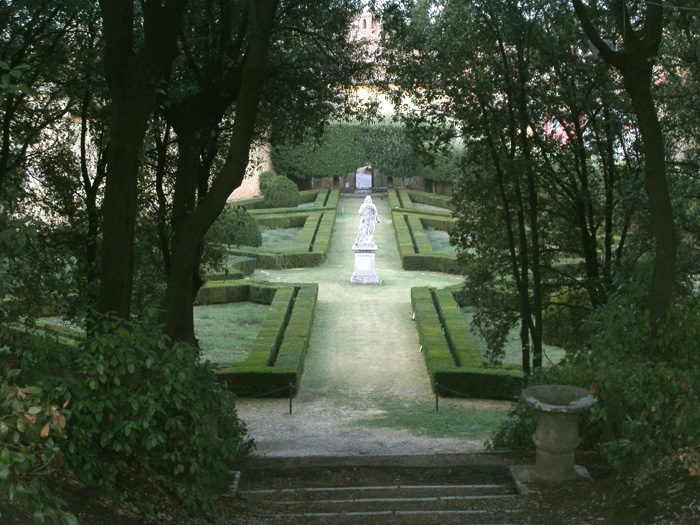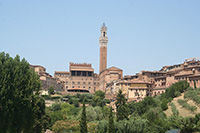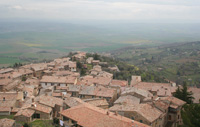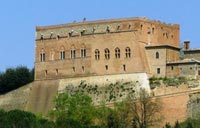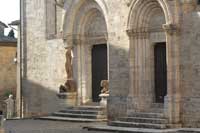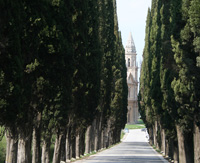Horti Leonini di San Quirico |
'The Horti Leonini is a small and very original universe that abounds in literary, artistic and scientific contents, which enclose invisible correlations between microcosm and macrocosm. It was realised by Diomede Leoni, right-hand man of the Medici family, who in 1535 received from Francesco I a piece of land amidst the bastions of San Quirico. |
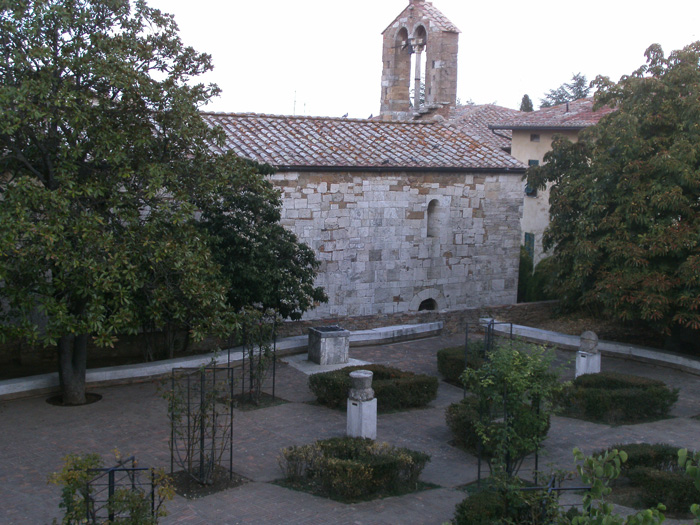 |
The Giardino delle Rose, a rose garden |
San Quirico d'Orcia is a charming, walled town on the northern edge of the Val d'Orcia. San Quirico d'Orcia is Etruscan in origin, and cinerary urns and other funeral objects and vessels found here are now kept in the Etruscan archeological museum in Siena. With its typical Medieval houses, Via Poliziano leads to Porta dei Cappuccini, a massive crenellated tower. |
||
| Among the most important monuments are to be mentioned the beautiful Collegiate church of Saints Quirico and Giulitta, built over the ruins of the church of Osenna dating back to the eighth century, with a magnificent Romanesque portal with zoomorphic sculptures and a lintel with the fight between monsters. On the right side there is another Lombardic portal supported by caryatids from the school of Giovanni Pisano. On the back of the collegiate there is Palazzo Chigi, built by Carlo Fontana for the Cardinal Flavio Chigi. Walking down the via Francigena, today called Via Dante Alighieri, you arrive in Piazza della Liberta’ with the church of San Francesco, bearing a Madonna painted by Della Robbia. On the square there is the Porta Nuova, opening to the Horti Leonini, an Italian style garden built by Diomede Leoni in 1540. Continuing you come to the church of Santa Maria Assunta, in Romanesque style with Lombardic influences, with another interesting portal built with material coming from the Abbey of Sant’Antimo. Nearby are the Giardino delle Rose (rose garden) and the centuries-old Scala hospital. Of the defensive structures there are remains of most of the 15th century walls, with just some portions missing. 14 towers and turrets are still visible, some of which are incorporated in other buildings. The Porta Nuova gate is still there, amended several times over the centuries and the original Porta dei Cappucini gate with a central six-sided shelves crowned by small stones that support the arch. Finally in the Horti Leonini garden there are the remains of the city gate tower that was partially destroyed during the German retreat in 1944.
|
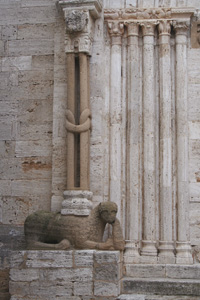 Collegiata dei Santi Quirico e Giulitta, portal Collegiata dei Santi Quirico e Giulitta, portal |
|
[1] Source: Institute and Museum of the History of Science, Florence, Italy | www.brunelleschi.imss.fi.it [2] Source: Diomede Leoni and His Horti Leonini | www.diomedeleoniandhortileonini.blogspot.be |
||||
Hidden secrets in Tuscany | Holiday house Podere Santa Pia |
||||
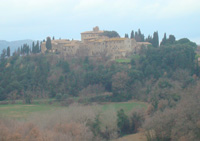 |
||||
Podere Santa Pia |
Podere Santa Pia, view from the garden on the valley below |
Castel Porrona, a charming medieval village dating back to the 11th century, between Cinigiano and Castiglioncello Bandini and Podere Santa Pia | ||
Pienza |
Montalcino |
|||
The wide and enchanting landscape of the Val d'Orcia area became one of the Unesco World Heritage sites in March 2005. Here is the original justification reported in the Unesco web site: 'The Val d'Orcia is an exceptional reflection of the way landscape was re-designed in Renaissance times to reflect the ideals of good governance and to create aesthetically pleasing pictures. Painters from the Siennese School, which flourished during the Renaissance, celebrated landscape of the Val d'Orcia. Images of the Val d'Orcia, particularly depictions of landscapes in which people are shown living in harmony with nature, are now considered strongly representative of the Renaissance and have profoundly influenced the development of landscape thinking. |
||||
San Giovanni d'Asso |
San Quirico d'Orcia |
Montepulciano |
||

